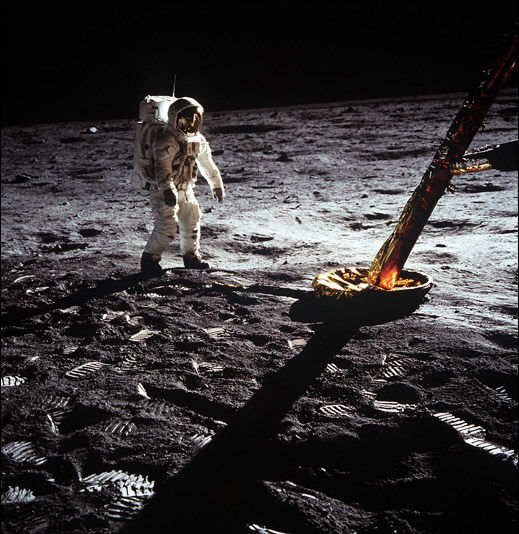Fifty years on from moon landing, new generation has different plans for manned space travel

buzz aldrin on the moon
July 21, 2019
The Apollo 11 astronauts — Michael Collins, Buzz Aldrin and Neil Armstrong — lifted off from Kennedy Space Center in Florida July 16, 1969. Four days later, Aldrin and Armstrong touched down on the lunar surface.
“One small step for a man, one giant leap for mankind,” Armstrong said, as he became the first human to step foot on another world.
Aldrin soon followed Armstrong out of their capsule, and onto the surface of the moon.
Meanwhile, Michael Collins orbited the moon on his own — the furthest any human had ever been from any others at any point in history. Collins said he was never lonely, and instead was happy when he was on the dark side of the moon — outside of radio-contact with Mission Control.
At least 20 Iowa State alumni were involved in the Apollo program or the larger American space program.
Charles Jacobson worked directly with the Apollo program, and its precursor: the Gemini program. Jacobson graduated from Iowa State in 1952 with a bachelor’s in aeronautical engineering.
A native of Cresco, Jacobson helped to develop the Gemini re-entry guidance system to ensure spaceship capsules — and the astronauts within them — could be directed to safe landing zones on Earth when returning from orbit. He received the Apollo 11 Mission Operations Team Award and the Iowa State University College of Engineering professional achievement citation in engineering.
Jacobson died in 2015, and many of those who were involved in the early American space program have passed as well. Armstrong himself died in 2012, and only four of the 12 astronauts who walked on the moon remain alive.
The next steps for the future of the space program remain unclear, though in a Friday Oval Office meeting with President Donald Trump, Aldrin told the president he was “disappointed” with the recent progress of the space program.
Collins, also at the meeting, expressed support for going directly to Mars, rather than a return to the moon “as a proving ground,” which the NASA Administrator Jim Bridenstine has called for.
A recent Gallup poll found 53% of Americans favor “setting aside money” for a manned mission to Mars.






